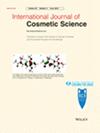Hydrolyzed conchiolin protein inhibits melanogenesis through PKA/CREB and MEK/ERK signalling pathways
Abstract
Objective
Hydrolyzed conchiolin protein (HCP) derived from pearl and nacre extracts exerts skin-lightening effects; however, the underlying molecular mechanisms are not fully understood. Herein, we investigated the effect of HCP on melanogenesis and the signalling pathways involved.
Methods
B16F10 cells and PIG cells were treated with HCP to verify its ability to inhibit melanin. Western Blot, immunofluorescence, and flow cytometry methods were performed to investigate the effect of HCP on melanogenesis signalling pathway proteins. The inhibitors were used to further validate the effect of HCP on PKA/CREB and MEK/ERK signalling pathways. To further evaluate the whitening ability of HCP, changes in melanin were detected using 3D melanin skin model and zebrafish model.
Results
HCP was found to significantly inhibit melanin synthesis and decrease the expression of melanogenesis-related proteins, such as microphthalmia-associated transcription factor (MITF), tyrosinase, and tyrosinase-related protein-2, in a dose-dependent manner. Additionally, we revealed that HCP suppresses melanogenesis via the regulation of the PKA/cAMP response element-binding (CREB) and MEK/extracellular signalling-regulated kinase (ERK) signalling pathways. Using 3D melanin skin models, we demonstrated that HCP can achieve skin-lightening effects by improving apparent chroma, increasing apparent brightness, and inhibiting melanin synthesis. Furthermore, HCP exhibits skin-whitening effects in a zebrafish model.
Conclusion
These results suggest that HCP suppresses the melanogenesis signalling cascade by inhibiting the PKA/CREB, MEK/ERK signalling pathway and downregulating MITF and its downstream signalling pathways, resulting in decreased melanin synthesis. In summary, HCP is a potential anti-pigmentation agent with promising applications in cosmetics and pharmaceutical products.


 求助内容:
求助内容: 应助结果提醒方式:
应助结果提醒方式:


